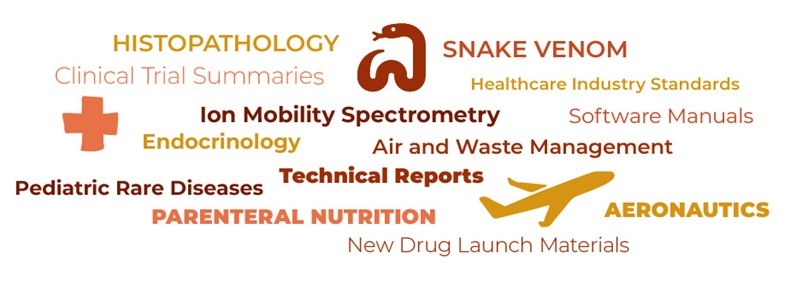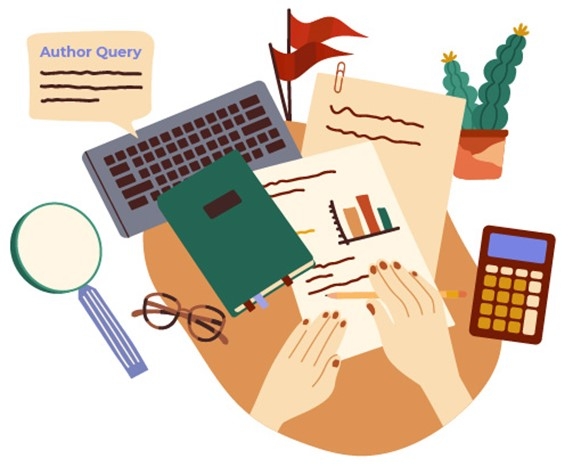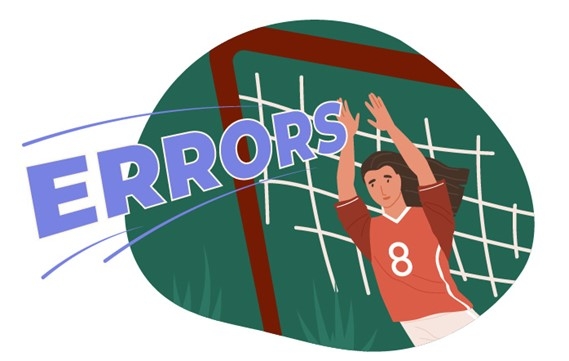
Why Do We Need Medical Editors?
Medical writers are highly trained to produce accurate medical text and communicate effectively to their audience. Many medical writers have PhDs and years or even decades of experience. Why do they need editors looking at their work? Why can’t a project manager just send the writer’s file directly to the client and hope for the best? Well, that is possible, but it is generally not advisable. Skipping an internal editorial review is a decision that could come back to haunt the team. It is an example of, “Just because you CAN do something, that doesn’t mean you SHOULD do it.” Making a good impression on the client requires delivery of a file that reflects careful attention to detail. Editors and writers can form a great partnership to produce and review a document. When editors are part of the internal review process, from an early draft to the final piece, their goal is to improve whatever comes across their desks without affecting the author’s intended meaning or introducing errors. Editors serve as a pair of fresh eyes trained to focus on both the forest and the trees. They look for individual errors but also focus on ways to polish and improve a document overall. This can include rewording for clarification, asking good questions to check for accuracy, ensuring consistency throughout the file, looking for parallel structure, and making adjustments to ensure adherence to internal and client style. Editors will check all areas of content in the text, graphics, tables, and audio, as well as the mechanics of the end matter, headers, footers, table of contents, pagination, footnotes, glossary, and reference lists.

Scientific, Technical, and Medical Editing
Medical editing falls under the larger umbrella of scientific, technical, and medical (STM) editing. These types of editors must have an additional set of skills beyond the basic knowledge that any good editor would possess. STM editors generally work with subject matter that can be difficult to read, understand, and retain. The figures and tables may be complex and heavy with numbers. There could be published equations and calculations, as well as calculations behind the scenes to be verified during the fact-check process. Use of math symbols, Greek letters, and other special formatting will be increased in this type of writing, and small differences can significantly affect meaning. Some editors may choose to avoid this type of material, but a good STM editor will take on the challenge and enjoy the process of reviewing the language and associated graphics, ensuring accuracy and making things look organized and consistent. Beyond their formal education, some of the editors may have an ELS (editor in the life sciences) certification offered by the Board of Editors in the Life Sciences (BELS). Others may have certification from the Society for Technical Communication (STC) or other similar organizations.

STM editors may work on textbooks, peer-reviewed journal articles, user’s manuals, society websites and newsletters, animations, posters, presentations, proceedings of national and international society conferences, marketing and sales training materials, testing and continuing medical education materials, and many other types of STM publications.
Editors can play an important role in the development of content and its delivery to clients. An STM editor does not need to be a subject matter expert in the field to conduct a thorough edit and positively contribute to the writing and review process. Appropriate use of author queries will ensure that text remains accurate and meaning is unchanged while discrepancies and confusing language are revised and clarified for the reader. Focusing on one area over time will definitely make the editor more comfortable working on pieces in that category, but flexibility is key. Over the course of a career, an STM editor might review thousands of pieces in hundreds of diverse areas:

Editors may review branded and unbranded materials for a wide variety of audiences, some with advanced degrees in STM areas, and others who need assistance to understand difficult concepts. The audiences of these pieces can include students, experienced experts in the field, military personnel, government agencies, clinicians who are learning more about a particular disease state, pharmaceutical representatives, wide-ranging online readers, parents of pediatric patients, and global healthcare experts. For each piece, editors will keep a specific audience in mind when making revisions and suggestions.


Editing at Red Nucleus
The editorial process at Red Nucleus (RN) serves as an example of how an agency with editorial expertise in the life sciences can help its pharmaceutical clients look good and succeed in their goals for communication, training, and marketing. Editors work on teams headed by client service directors. The teams focus as specialists who serve a specific group of clients. For their clients, RN medical editors review branded and unbranded responsive e-learning modules, ebooks, virtual preceptorships, print summaries, infographics, in-person and virtual workshop materials, assessments, and many other types of deliverables. Editors at RN also provide quality assurance (QA) of beta programs for modules, assessments, podcasts, videos, and games. In addition, the editors also review proposals, outlines, and corporate sales and marketing materials. Editors process materials assigned to them by their project managers and interact with authors as needed to ask queries and clarify text and graphics that are being finalized for client review. RN editorial associates in Pune, India, will play a variety of roles including fact checking, preparation for submission, and initial QA for some programming tasks.

Working With Multiple Life Sciences Clients
Depending on agency size and structure, some medical editors may primarily focus on projects for one large client, others may serve a few clients, and some may support a large number of clients. In fact, a challenging aspect of medical editing is adapting to the style of multiple clients and brand teams. Although RN editors work on multidisciplinary teams that include artists, medical writers, instructional designers, and project managers, team members provide cross-team support on an as-needed basis.
This flexibility requires time management, attention to detail, style guide knowledge, and good documentation of individual client styles and brand preferences. Cross-team support keeps documents and materials moving through the review and revision process to ensure that clients will receive their deliverables on schedule. An agency with broad editorial expertise, like RN, will help its life sciences clients succeed in their goals for communication, training, and marketing.

Adapting Content for US and International Clients
In our increasingly global markets, disease state and brand content is designed to be shared among international life sciences clients, but each file must conform to the necessary guidelines and regulations of specific countries. Often, medical editors help writers adapt pieces originally written for US teams to a global audience. Likewise, they can help adapt global pieces for US audiences. This can include style changes, especially spelling and punctuation, and verifying that the writer’s changes to text are also pulled through to graphics and other related content. The reference list needs to be adjusted, for example, to use citations for either US prescribing information or the summary of product characteristics published by the European Medicines Agency. Some content and references may be deleted or added, and the reference list may be renumbered. A medical editor will help to smooth out the transition when adapting documents and programs for new audiences. When there are multiple international authors and rounds of revision and adaptations, medical editors might serve as the glue that holds the document together in a cohesive manner.
Following a Hierarchy of Style Guides
Editors must be familiar with multiple style guides, including client-specific guides, brand-specific guides, and other resources that may be relevant. RN has established a hierarchy of style guides. If a client has provided an editorial style guide or a list of preferences, that information usually takes priority when making style decisions. For topics not addressed in client style guides or expressed preferences, writers and editors may follow an agency’s in-house style guide. In addition,the AMA Manual of Style is a widely used resource for medical content. For global audiences, the University of Oxford Style Guide may be the preferred source.Additional guidance on spelling may be obtained from online dictionaries, such as Merriam-Webster. Various medical dictionaries, including Taber’s, Stedman’s, Dorland’s, and the National Cancer Institute, are also consulted for medical terminology.
Incorporating Client Comments
Ensuring that all client comments are addressed and properly incorporated is a major responsibility for agencies. Comments may be received through formal medical/legal/regulatory (MLR) reviews and during client calls and draft reviews. Interpreting client comments and making the necessary changes and corresponding pull-throughs are crucial steps to move a document along the timeline and finalize it for use. There are many ways an editor can assist during this process. For comments that do not require a medical writer to change the content, the editor can make the changes. More often, editors review a writer’s changes to ensure that all comments are addressed, no errors are introduced, new text is formatted to match the rest of the document, and changes are pulled through in related sections as needed. Editors must also use good judgment, walking a line to make necessary updates and corrections but avoiding changing approved text. Editors must flag potential issues to project managers if additional changes seem warranted. Some comments may express changes due to preferences instead of errors, and the editor may help make recommendations to ensure consistency.

Checking Facts and Citations
Fact checking for medical writing includes:
- Ensuring that the cited references support all details in the text
and graphics - Flagging any content that does
not appear to be supported by references - Checking that the citation format and placement are consistent and accurate throughout
- Double-checking any calculations
- Querying content that doesn’t match or may need to be changed or updated
- Verifying that the reference list and folder include all (and only) cited sources
- Ensuring that the reference PDFs are properly annotated to match the citations in the document for uploading and linking in a client’s document management system
An accurate fact-check process is critical to having a piece approved after the MLR review. Medical editors will perform fact checking when needed. An initial fact check will thoroughly verify all citations throughout the text. At RN, the team in Pune will conduct most of the initial fact checking. Fact checking at later stages is usually handled by RN editors and will focus on new or revised citations created after client review and for reference updates.
Polishing the Final Product
When document files become beta programs and final presentations, medical editors can also perform quality assurance (QA) testing to ensure that these components function as intended. Does each screen present the approved content accurately? Do assessments have the correct questions, answers, and feedback? Do the final graphics match the storyboard specifications? Are the glossary links working? Are the disclaimers and end matter displayed as intended? Is the audio in sync with the onscreen materials? Are all video and PDF links opening up with no issues? Does the program work in all required browsers and operating system versions? Are the screens responsive for the different platforms? Once QA testing is completed, further changes may be implemented after the client reviews the program. Polishing the final appearance of a program to facilitate user experience is an important function of medical editors at RN and in most agency settings.

Adding Value for the Team
Project managers drive the process to ensure that medical writers, instructional designers, artists, editors, and program developers have time to complete their tasks so items can be delivered to clients on or ahead of schedule. Throughout the process, medical editors must be flexible and able to work with other team members to review all individual components. Editors strive to verify accuracy of information, compare files to ensure that content appears correctly across deliverables, and pay attention to details. Having an editorial eye on the project helps to prevent errors from slipping through to be seen by clients and end users. In that respect, editors are like goalies. A good goalie makes all the difference to team success.

Helping Corporate and Life Sciences Clients Succeed
Medical editors also apply their skills to improve internal corporate communications, websites, marketing materials, emails, workshops, papers, proposals, and presentations. Content creators who make regular use of editors ensure a smoother process, resulting in more polished internal and client-facing materials. Life sciences companies who partner with agencies like RN that have experienced editors and structured medical editing processes will benefit by saving review time and receiving documents and modules that have been carefully checked and tested. Understanding the overall editorial process enables a team to identify where, when, and how to use medical editors effectively to benefit both the process and the final product. RN medical editors aim to delight their clients by adding value, polish, and style for all deliverables.
Written by Trisha Gage, Senior Medical Editor, with illustrations by Karlee Rogers, Artist
